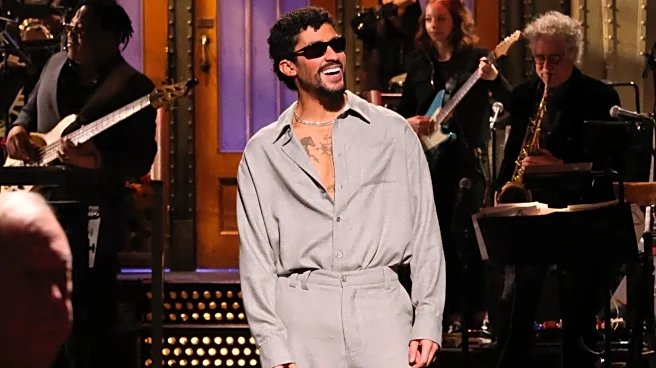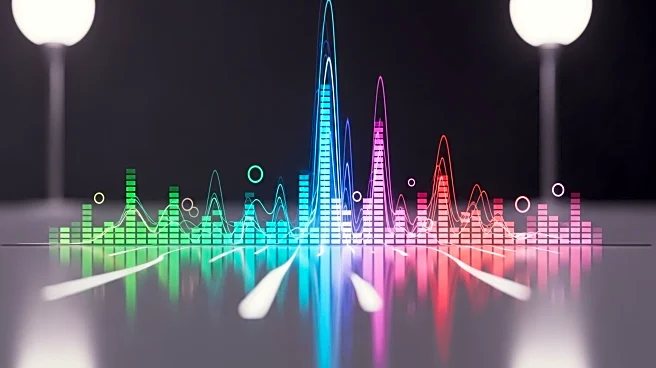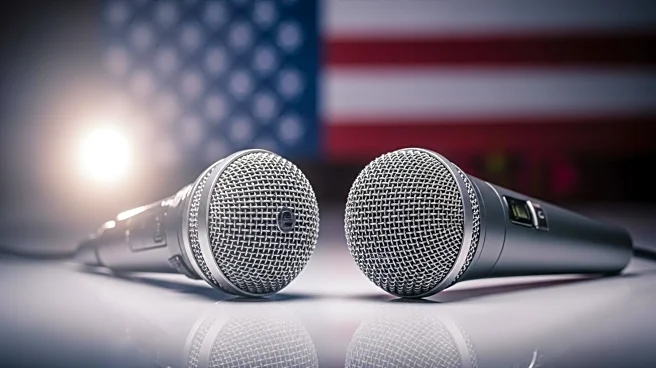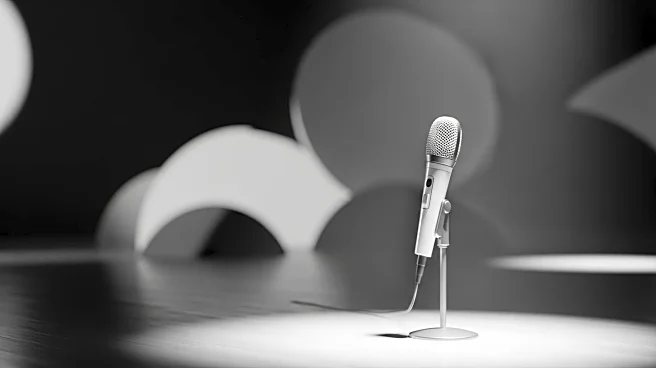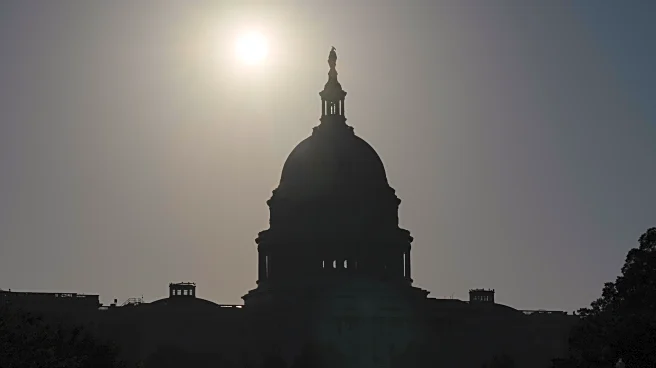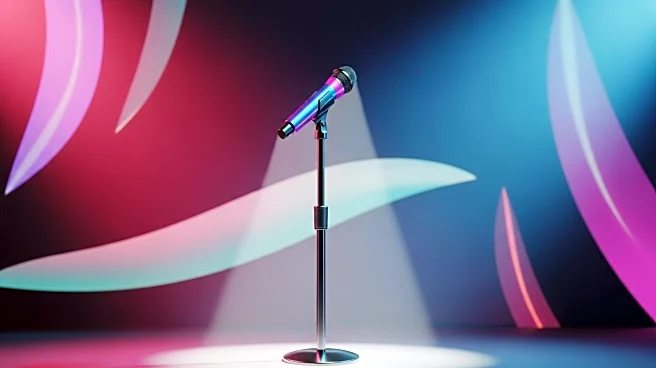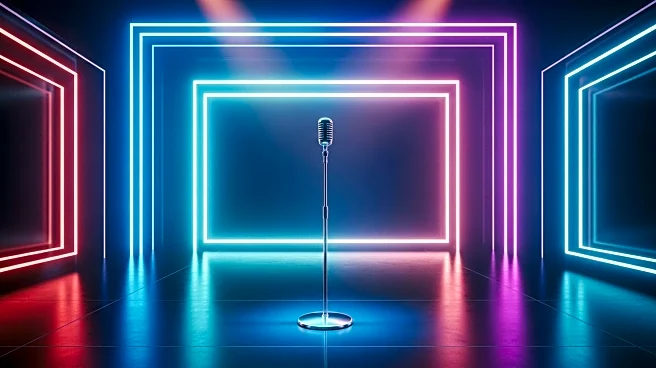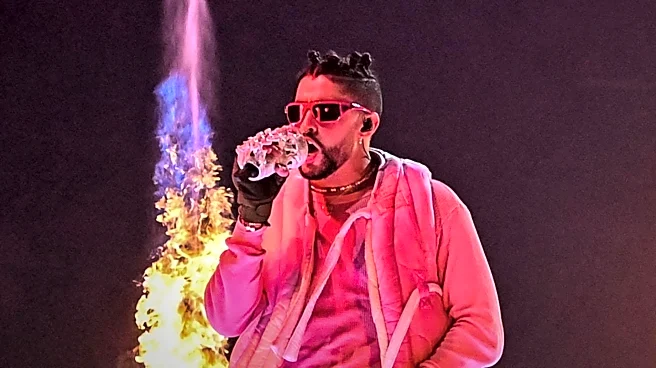What's Happening?
Puerto Rican superstar Bad Bunny has experienced a significant increase in music streams following the announcement of his performance at the 2026 Super Bowl halftime show. According to Luminate, a data and analytics company, Bad Bunny's on-demand streams in the United States surged by 26% after the announcement on September 28, rising from 173 million to 218.5 million streams. The artist, known for performing in Spanish, will continue to do so at the Super Bowl, showcasing the ability to connect with audiences without singing in English. His recent residency in Puerto Rico attracted half a million visitors and generated substantial economic benefits for the island.
Why It's Important?
Bad Bunny's selection for the Super Bowl halftime show is a landmark moment for Latino culture, highlighting the growing influence of Latin music in the U.S. and globally. The increase in music streams underscores the artist's popularity and the potential for cultural representation on major platforms. This event also reflects broader societal shifts towards embracing diverse cultural expressions in mainstream entertainment. The economic impact of his residency in Puerto Rico further demonstrates the power of cultural events to drive tourism and economic growth.
What's Next?
Bad Bunny's upcoming performance at Levi's Stadium in Santa Clara, California, on February 8, 2026, is expected to draw significant attention and further discussions about cultural representation in major events. The artist's political stance, including his criticism of President Trump and support for Kamala Harris, may continue to provoke reactions from various political groups. As the Super Bowl approaches, stakeholders in the music and entertainment industry will likely monitor the impact of his performance on streaming numbers and cultural discourse.
Beyond the Headlines
Bad Bunny's role in the Super Bowl halftime show highlights the intersection of entertainment and politics, as his music often addresses themes of Puerto Rican identity, colonial politics, and immigrant struggles. This performance could influence public perceptions of Latino artists and their role in political and cultural conversations. The event may also prompt discussions about the representation of non-English-speaking artists in U.S. media and entertainment.

